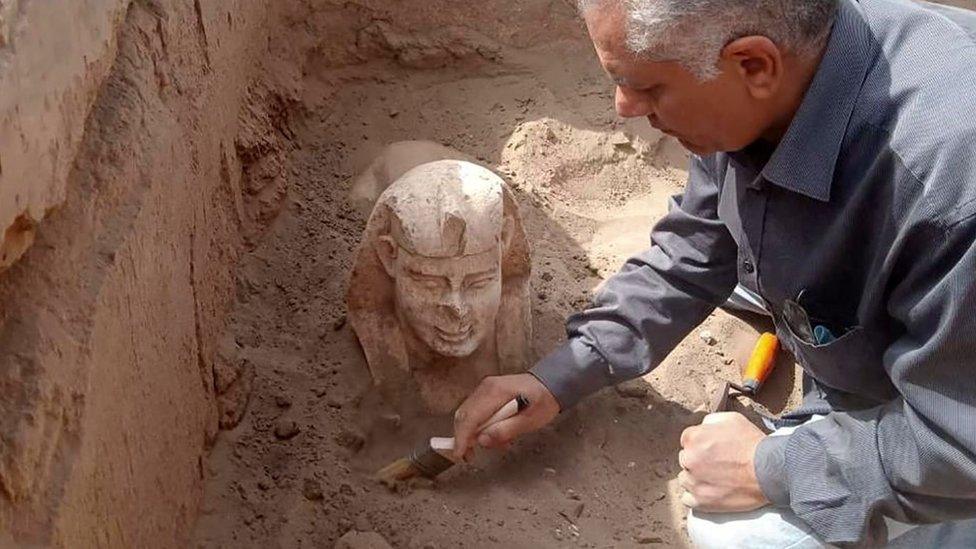Ancient Egypt: Smiling mini-sphinx statue discovered at ancient site
- Published
- comments

Archaeologists have discovered a sphinx-like statue with a smiley face and dimples in southern Egypt!
The limestone statue was found alongside a stone slab containing hieroglyphic engravings near the Hathor Temple, one of the countries best-preserved ancient sites.
Experts think the sphinx may represent Roman Emperor Claudius, who ruled in the first century.
Researchers now hope to study the markings on the stone, which could reveal more information on the mystery statue's identity!
How did the sphinx statue get found?
The artefacts were found inside a tomb in the temple of Dendera, in southern Egypt.
Experts say that the limestone shrine includes a two-layer platform and a mud-brick basin from the Byzantine era.
Archaeologists believe that the smiling sphinx could be depicting Emperor Claudius who ruled between 41 and 54 AD and extended Rome's empire into North Africa.
The statue is much smaller than the famous Sphinx in the Pyramids of Giza, which is 20m high.
Emperor Claudius was also behind the Roman Empire's successful invasion of Britain!
It begin in 43AD, when the Roman army landed on the beaches in Kent before gradually extending their control over much of the country.
Next to the "beautifully and accurately carved" sphinx, researchers also found a Roman era stone slab which contained hieroglyphic scripts, Egypt's tourism and antiquities ministry announced.
Once fully deciphered, experts say the stone slab may help confirm the identity of the mystery sphinx.
Egypt has unveiled a number of important archaeological discoveries in recent months.
In February, more than thirty large ceramic pots were discovered at a site in Saqqara, close to Egypt's capital, Cairo.
And last week authorities announced the discovery of a mysterious hidden nine-metre long chamber inside the Great Pyramid of Giza.
- Published18 January 2021
- Published14 February 2022
- Published30 September 2021
